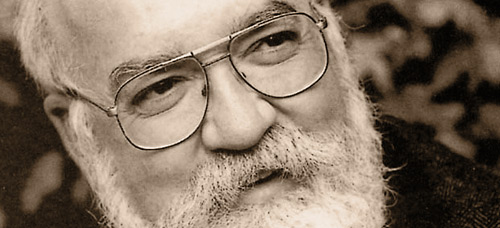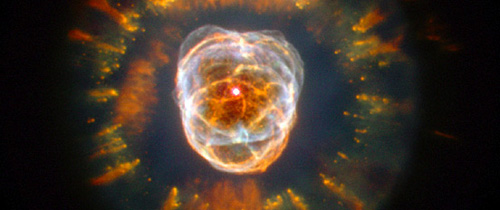
NEW Dr. Daniel Dennett lecture at Shop Skeptic
Breaking The Spell
Religion as a Natural Phenomenon
One of the greatest thinkers of our age tackles one of the most important questions of our time: why people believe in God and how religion shapes our lives and our future. Dennett takes a hard look at this phenomenon and asks: Where does our devotion to God come from and what purpose does it serve? Is religion a blind evolutionary compulsion or a rational choice? Deftly and lucidly, he contends that the “belief in belief” has fogged any attempt to rationally consider the existence of God and the relationship between divinity and human need. This is a recording of his recent talk, part of at the Skeptics Distinguished Lecture Series at Caltech.
In this week’s eSkeptic, we present Michael Shermer’s review of George Basalla’s book Civilized Life in the Universe: Scientists on Intelligent Extraterrestrials (Cambridge University Press, 2006, ISBN 0195171810). The review was originally published last week in the journal Science.
Also, in this week’s eSkeptic, a band called Overman (who writes songs about science, skepticism and critical thinking), shares a song with you.
Deities for Atheists
The Science Without a Subject
a book review by Michael Shermer

A majestic view of a planetary nebula, the glowing remains of a dying, sun-like star.
(Hubble Space Telescope photo courtesy of GRIN)
On February 8, 2000, the New York Times science section featured a newly published book, Rare Earth: Why Complex Life is Uncommon in the Universe1 by the paleontologist Peter Ward and astronomer Donald Brownlee, who were called radicals for daring to challenge the orthodox assumption that the cosmos is probably teaming with complex life. “Now, two prominent scientists say the conventional wisdom is wrong.”2
How did the belief in the existence of extra-terrestrial intelligence (ETI) change from the heresy it was in the early 1960s when Frank Drake, Carl Sagan, and others took up the search, to “conventional wisdom” by the late 1990s? It certainly was not due to any new empirical data for the existence of ETIs, since this continues to be a science without a subject. A compelling answer may be found in George Basalla’s critically important new book, Civilized Life in the Universe, the best treatment on the history and science of the subject since Steven Dick’s magisterial two volumes, Plurality of Worlds and The Biological Universe.3
Basalla’s tightly-woven and highly readable narrative begins with an epigraph from the theoretical physicist Paul Davies: “What I am more concerned with is the extent to which the modern search for aliens is, at rock-bottom, part of an ancient religious quest” (p. 3). That is precisely what it is, says Basalla, who precedes to outline three assumptions underlying the thinking about extra-terrestrial intelligence from antiquity to the present:
- the universe is very large or infinite,
- there are other inhabited worlds,
- these other complex and intelligent beings are vastly superior to us.
Modern cosmology has confirmed the first assumption. We live in an accelerating expanding universe some 13.7 billion years old, which contains several hundred billion galaxies each of which houses several hundred billion stars. And modern astronomy is in the process of confirming half of the second assumption: there are a great many worlds circling those hundreds of billions of stars in our galaxy. Whether they are inhabited or not, of course, remains to be seen.
As for the third assumption, if we did make contact with an ETI, they would have to be vastly superior to us (since we just recently mastered radio and space-flight). On an evolutionary time scale, an ETI species only slightly ahead of us biologically could be millions of years ahead of us technologically. Pace Arthur C. Clarke, I have called this Shermer’s Last Law: “Any sufficiently advanced extra-terrestrial intelligence is indistinguishable from God.”4
This is actually an ancient belief, says Basalla.
The idea of the superiority of celestial beings is neither new nor scientific. It is a widespread and old belief in religious thought. Aristotle divided his universe into two distinct regions, the superior celestial realm and the inferior terrestrial realm.
The incorporation of Aristotle into Christian theology carried this belief into the Middle Ages. “Christians populated the celestial regions with God, the saints, angelic beings of varying ranks, and the souls of the dead. These immortal celestial beings were superior to mortals, who inhabited the inferior terrestrial realm” (p. 10). Even though the Copernican revolution overturned Aristotelian cosmology, “the belief that creatures living on a distant planet were superior to the human species” hung on into the modern age, and that “religious elements continue to adhere to the perception of extraterrestrial life even as we study it in the twenty-first century” (p. 12).
As I demonstrated in an analysis I conducted on the SETI pioneers,5 most were once religious but became either atheists or agnostics as adults. Radio astronomer Frank Drake — creator of the canonical “Drake Equation” for estimating the number of ETIs inhabiting the galaxy — was raised Baptist, and later reflected: “A strong influence on me, and I think on a lot of SETI people, was the extensive exposure to fundamentalist religion.”6 In his book on the subject, Drake suggested that “immortality may be quite common among extraterrestrials.”7 Carl Sagan — who did more than anyone to conventionalize SETI — was raised Jewish and became agnostic, later writing of SETI’s importance: “It touches deeply into myth, folklore, religion, mythology; and every human culture in some way or another has wondered about that type of question.”8 ETIs are secular Gods. Deities for atheists.
Why should so many people — theists and atheists, theologians and scientists — believe in the existence of superior celestial beings, be they angels or aliens? Basalla’s answer is twofold:
- the psychologist Robert Plank suggests that humans have an emotional need to believe in imaginary beings.9 “Despite all their scientific trappings,” Basalla writes, “the extraterrestrials discussed by scientists are as imaginary as the spirits and gods of religion or myth” (p. 14);
- the historian of science Steven Dick thinks that when the Newtonian mechanical universe displaced the spiritual world of the Middle Ages it left a vast and lifeless void, which was filled by modern science with ETIs. Consider Sagan’s vision of alien intelligences, says Basalla. “Sagan was certain that these creatures were benevolent. They would help us solve current problems, like the spread of nuclear weapons and environmental pollution, by sharing their advanced knowledge with us” (p. 13).
Basalla is also highly critical of the anthropomorphism inherent in SETI science. Although Sagan identified a number of chauvinisms (oxygen, carbon, temperature, etc.) that cloud scientific thinking on this subject, Basalla thinks that he didn’t go far enough. The chauvinism that ETIs will communicate via radio signals, that their intelligence will take a form similar to ours, and especially that they are social beings who live in civilizations are anthropomorphisms that have no basis whatsoever in reality. We cannot even communicate with terrestrial intelligences such as apes and dolphins, Basalla notes, “how can we hope to decode complex messages sent by superior extraterrestrial ones?” (p. 200).
Nevertheless, if we do make contact with intelligent celestial beings, all of this speculation and conjecture will fall by the wayside in favor of real science. So in the spirit of scientific inquiry, the search must go on. Ad astra!
References & Notes
- Ward, P. D. and D. Brownlee. 2000. Rare Earth: Why Complex Life is Uncommon in the Universe. New York: Copernicus Books.
- Broad, W. J. 2000. “Maybe We Are Alone in the Universe, After All.” New York Times, February 8.
- Dick, Steven J. 1982. Plurality of Worlds. Cambridge: Cambridge University Press; 1996. The Biological Universe. New York: Cambridge University press.
- Shermer, Michael. 2002. “Shermer’s Last Law.” Scientific American, January, p. 33.
- Shermer, Michael. 2001. The Borderlands of Science. New York: Oxford University Press.
- Swift, D. 1990. SETI Pioneers: Scientists Talk About Their Search for Extraterrestrial Intelligence. Tucson: University of Arizona Press, p. 57.
- Drake, Frank and Dava Sobel. 1992. Is Anyone Out There? New York: Delacorte, p. 160.
- Swift, D. 1990, p. 219.
- Plank, Robert. 1968. The Emotional Significance of Imaginary Beings. Springfield: Charles C. Thomas.

Evolution Rocks.
Overman’s Gift to You
Recently a member of Overman (a band that writes many of its songs about science, skepticism and critical thinking) wrote to the Skeptics Society about their music. Below is a link to the song Evolution Rocks which is Overman’s gift to you, the advocates of science. From the band:
Our mission statement includes spreading skepticism and the critical thinking skills that are necessary for scientific method — just like many of you — except we do it through pop songs. Feel free to play this song for anyone, anytime, anywhere.

lecture reminder…
The Bridge to Humanity
How Affect Hunger Trumps the Selfish Gene
with Dr. Walter Goldschmidt
Sunday, March 12th, 2006
Baxter Lecture Hall
Caltech, Pasadena, CA
Anthropologist Walter Goldschmidt argues that culture is the product of deep biological mechanisms that came into being by an evolutionary process.











